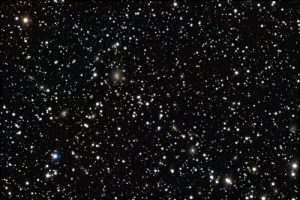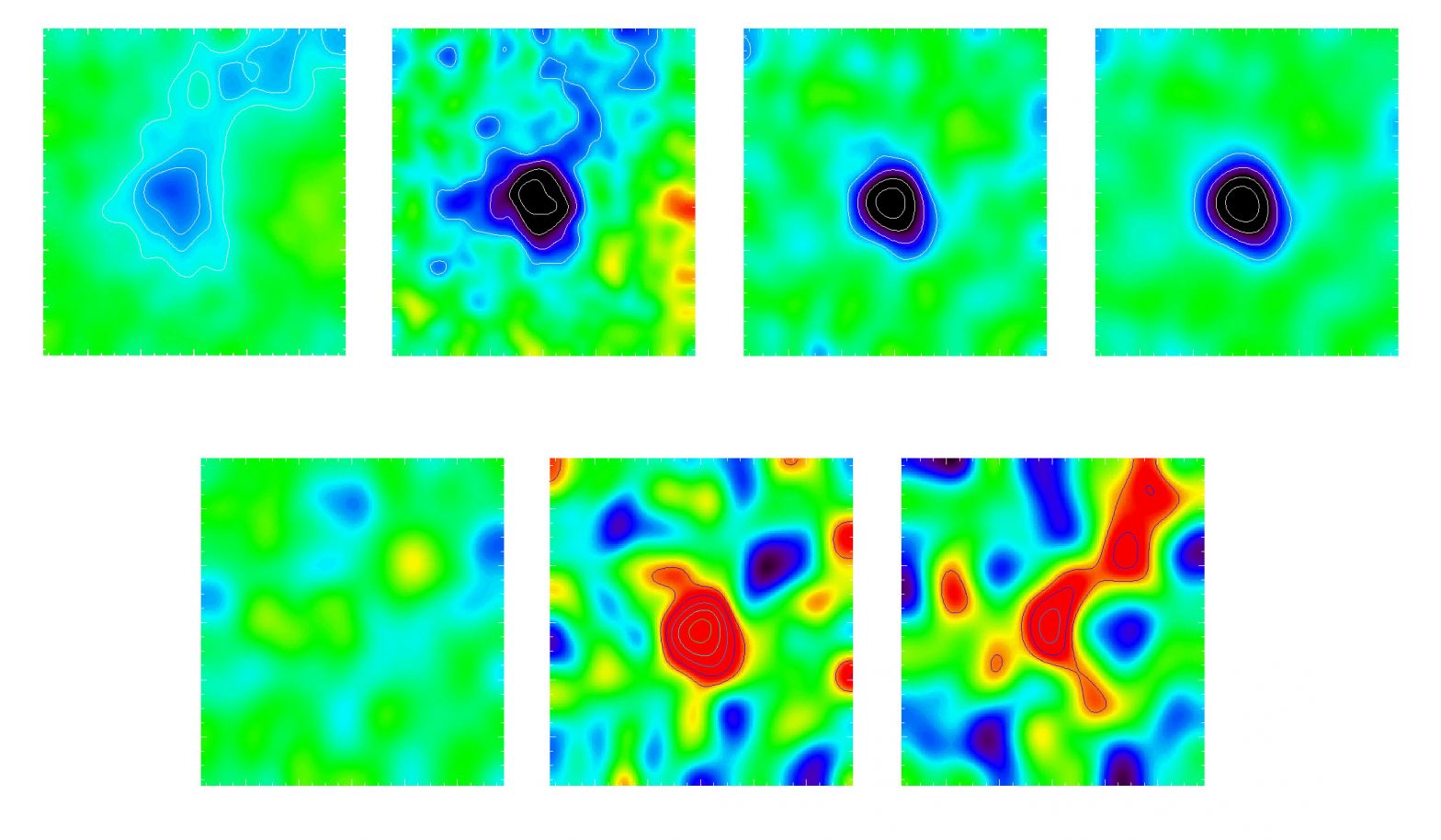| Basic Information | |
| What is this? | The galaxy cluster Abell 2319 as seen at seven of Planck’s frequencies |
| Where is it in the sky? | In the constellation of Cygnus the Swan |
| How big is it? | The cluster contains hundreds of galaxies, and each panel is around 2 degrees across |
| How far away is it? | The cluster is around 800 million light years away |
| What do the colours represent? | Red is hot and blue is cold; the cluster looks different at each frequency |
Downloads
This panels in this image show the detection by Planck of a nearby cluster of galaxies called Abell 2319. The extremely hot gas in the centre of the galaxy cluster has an effect on the light which originated in the Cosmic Microwave Background (CMB). The effect, called the “Sunyaev-Zel’dovich” effect is heavily dependent on frequency, and is apparent in data from Planck’s due to the wide range of frequencies it observes. The seven panels in this image correspond to seven of Planck’s frequency channels (top row, left-right: 44, 70, 100, 143 GHz; bottom row: 217, 353, 545 GHz).

Abell 2319 lies around 800 million light years away and contains hundreds of galaxies of all shapes and sizes. An image of the cluster in visible light can be seen on the right. The centre of the cluster is marked by a cloud of gas, which is heated up to extremely high temperatures. This gas is invisible at visible wavlengths, but emits X-rays. The gas is ionised, and the electrons are extremely energetic. They are so energetic, in fact, that when light from the CMB passes through, the electrons give it a little extra energy. The unaffected CMB radiation has a particular dependence with frequency, dictated by the CMB temperature of 2.7 K. The addition energy from the electrons in the cluster means that the the frequency-dependence of the light changes. Less light is seen at lower frequencies, and more at higher frequencies. The frequency of 217 GHz (bottom left panel of the image above) is a special case, where there is no Sunyaev-Zel’dovich effect, and the CMB can be seen through the cluster.
The hot gas in the cluster also emits strongly in X-rays. You can see this area of sky in Chromoscope, where a faint smudge is visible in the X-ray image.
